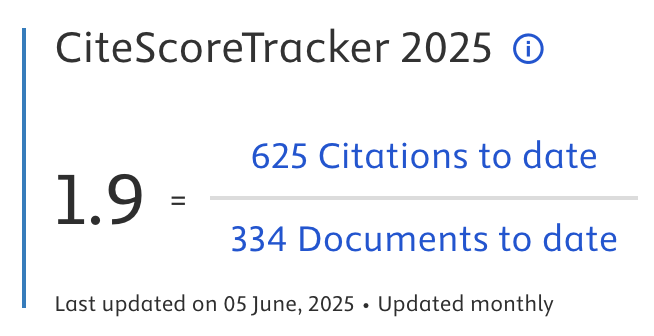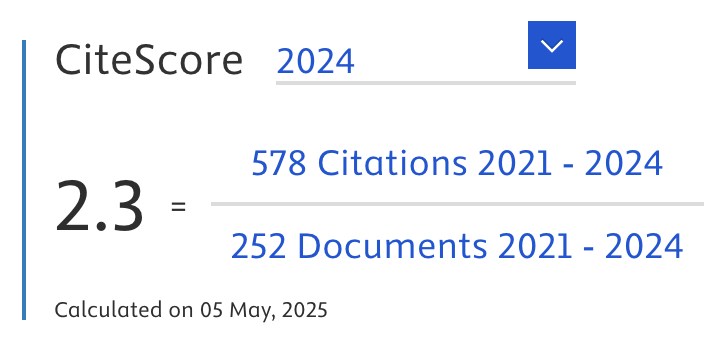YOLOv12 Model Optimization for Monitoring Occupational Health and Safety in Hospital Archive Rooms
Abstract
The application of artificial intelligence technology in occupational safety monitoring systems within healthcare facilities has become an urgent necessity, particularly to support compliance with Occupational Safety and Health (OSH) standards in hospitals. This study aims to develop an automated detection model based on YOLOv12 to identify visual OSH elements in hospital archive rooms, such as APAR, evacuation signs, windows, and Personal Protective Equipment (PPE) including masks, gloves, and shoes. The initial dataset consisted of 2,866 documented images, which were expanded through augmentation to 6,886 images to increase data diversity and prevent overfitting. The YOLOv12 model was trained over 100 epochs using SGD as the optimization technique. The dataset was divided into three subsets training, validation, and testing in a proportional manner. Model evaluation employed metrics such as precision, recall, mAP@0.5, and mAP@0.5–0.95, supported by visualizations including the confusion matrix, F1-confidence curve, and precision-recall curve. One of the key advantages of YOLOv12 lies in its architectural efficiency and enhanced generalization capability, enabled by the integration of R-ELAN, Area Attention Mechanism, and FlashAttention. These components allow for broader receptive field processing with reduced computational complexity. Furthermore, the removal of positional encoding and adjustment of the MLP ratio make the model lighter and faster without compromising accuracy. Compared to previous versions (YOLOv8–YOLOv11), YOLOv12 demonstrates more stable and accurate performance in detecting complex OSH objects in indoor environments. The system was also implemented in a real-time user interface using Streamlit, automatically displaying personnel PPE completeness and room safety compliance status. In conclusion, the optimized YOLOv12 model has proven effective for real-time visual detection in OSH contexts. Future studies are recommended to incorporate data balancing approaches, spatial segmentation, and IoT sensor integration to expand the system’s coverage and resilience across diverse workplace conditions.
Article Metrics
Abstract: 100 Viewers PDF: 110 ViewersKeywords
Full Text:
PDFRefbacks
- There are currently no refbacks.

Journal of Applied Data Sciences
| ISSN | : | 2723-6471 (Online) |
| Collaborated with | : | Computer Science and Systems Information Technology, King Abdulaziz University, Kingdom of Saudi Arabia. |
| Publisher | : | Bright Publisher |
| Website | : | http://bright-journal.org/JADS |
| : | taqwa@amikompurwokerto.ac.id (principal contact) | |
| support@bright-journal.org (technical issues) |
 This work is licensed under a Creative Commons Attribution-ShareAlike 4.0
This work is licensed under a Creative Commons Attribution-ShareAlike 4.0





.png)